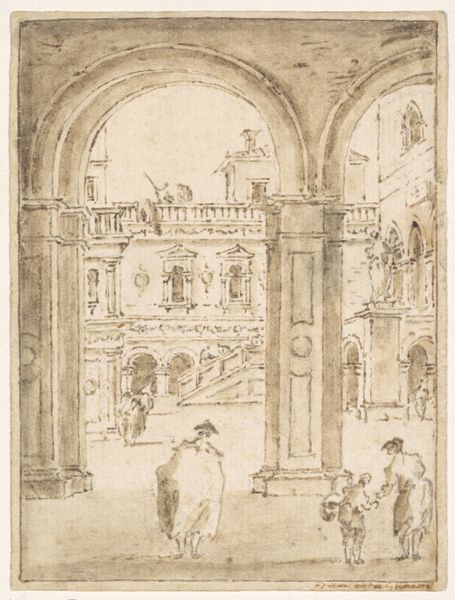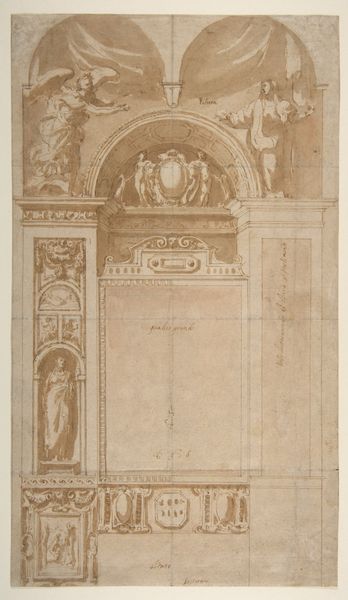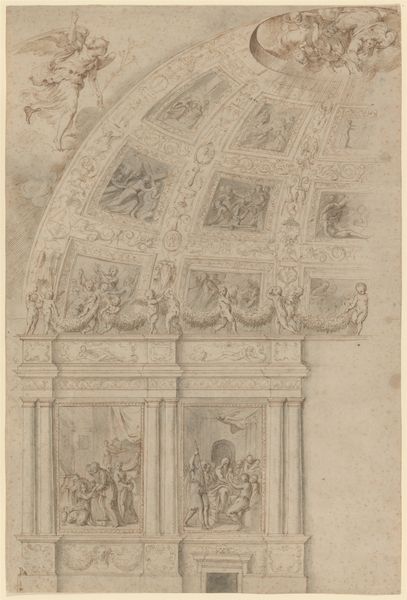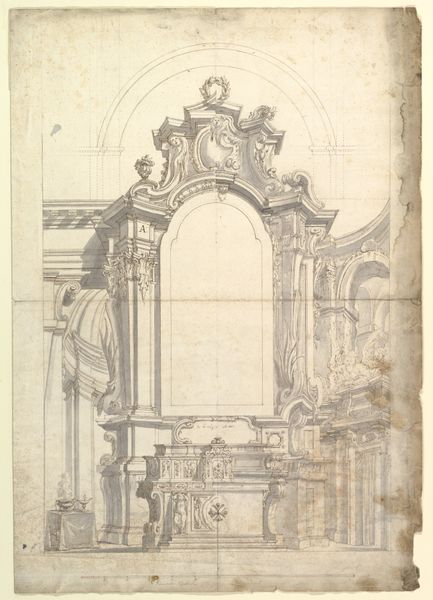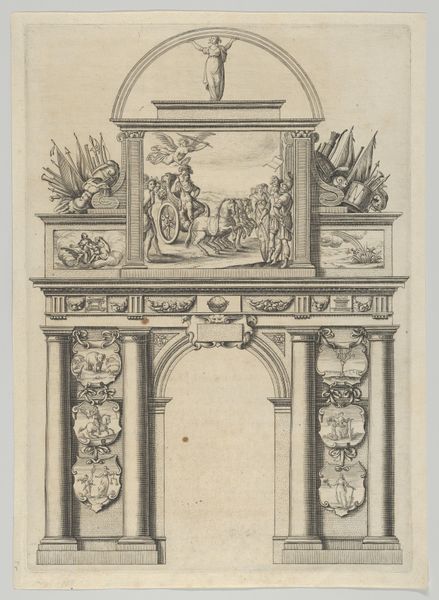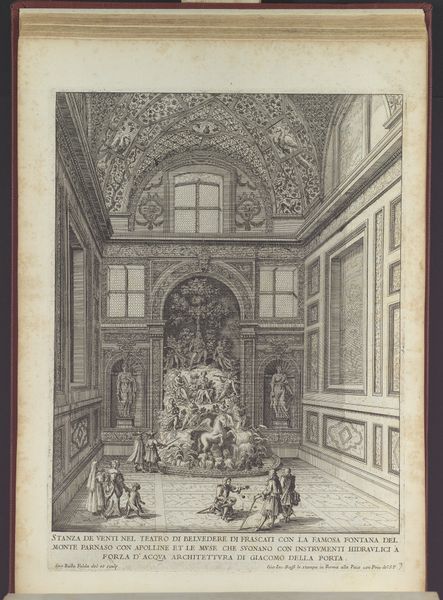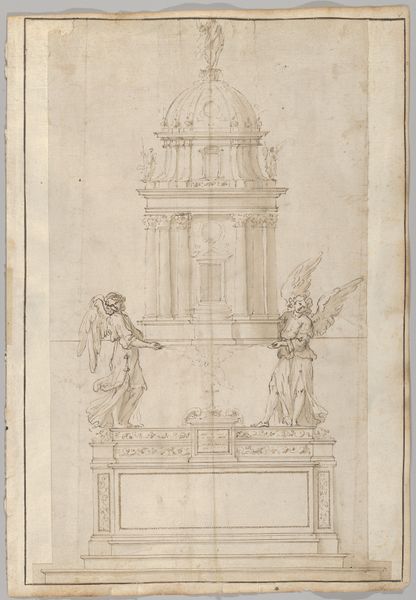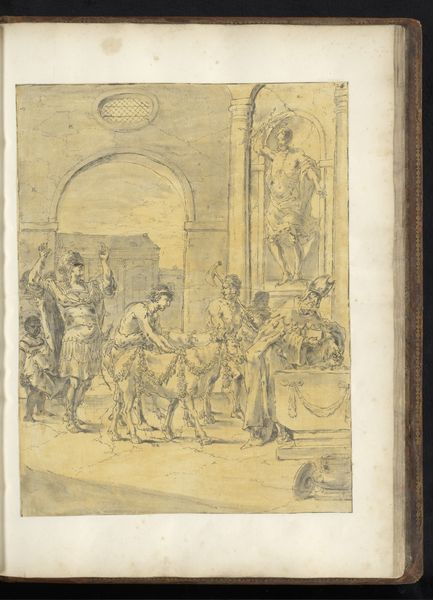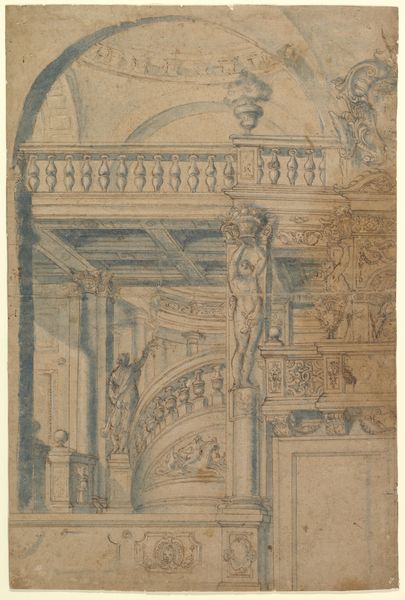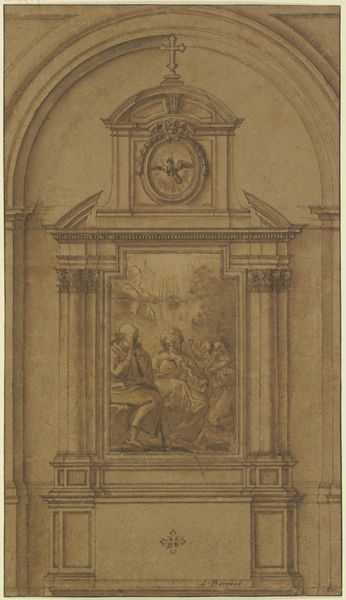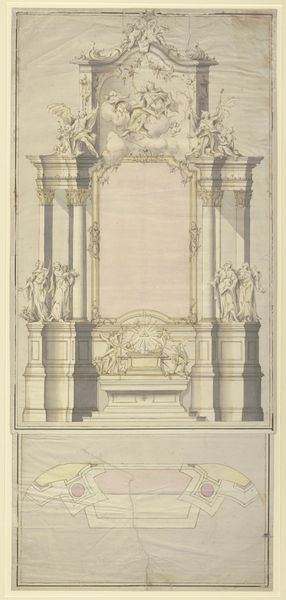
Der Heilige Antonius von Padua predigt vor einer Versammlung von Geistlichen
0:00
0:00
drawing, ink, chalk, graphite
#
portrait
#
drawing
#
baroque
#
ink
#
chalk
#
graphite
#
genre-painting
#
history-painting
#
watercolor
Copyright: Public Domain
Curator: I find this preparatory drawing by Andrea Sacchi so captivating. "Der Heilige Antonius von Padua predigt vor einer Versammlung von Geistlichen," which translates to "Saint Anthony of Padua Preaching to a Gathering of Clerics." It's currently held at the Städel Museum. Editor: It does have a striking sense of... order. Not necessarily of the divine variety, but rather, well, structural. I am sensing a controlled sort of atmosphere, despite being a preaching scene. A very linear, constructed feel overall, which for a saint delivering a sermon is...unconventional, no? Curator: Indeed. The artist worked in graphite, chalk and ink. Sacchi was clearly methodical. This composition feels deliberate, an architecturally designed sacred space. What intrigues me is the purpose of these preliminary drawings—to work out ideas and test possible solutions. It begs the question, "What kind of statement was Sacchi seeking to make in this specific setting?". Editor: Precisely. And within what power structures does a 'saint' operate? Anthony preaching before clergy – it isn't necessarily about his message being disseminated to the public but about negotiating space with religious elites, about recognition and, dare I say, authorization. A strategic gathering of minds. Curator: Absolutely! Anthony of Padua was not afraid to call out corruption within the church. So we might consider, "What tension, then, lives inside this drawing?" The composition isn’t explosive. The tension resides in these neat, ordered lines. The Baroque aesthetic tends to invoke powerful expressions of spirituality, yet this artwork stands relatively subdued within that definition. Editor: And there’s an element of portraiture too, right? Documenting or staging certain people or attitudes. The "divine" then, becomes secondary. What comes to the fore are the power relations within this room, and beyond it. I think by choosing this format Sacchi isn't just depicting the event, he's also commenting on the very infrastructure that makes that moment, and the 'saint', possible. It really pulls the divine down to Earth with an emphatic thump. Curator: And it becomes our responsibility to interpret it! It may well challenge those divine perceptions, I am left musing over Saint Anthony’s era more keenly. Editor: Agreed. It prompts reflections far beyond art history, pushing us to re-evaluate established perspectives, which is the most compelling outcome one can wish for.
Comments
No comments
Be the first to comment and join the conversation on the ultimate creative platform.
